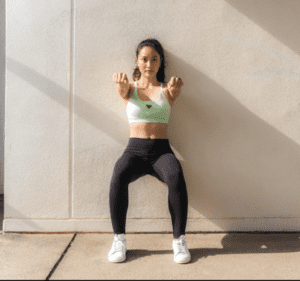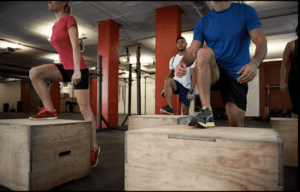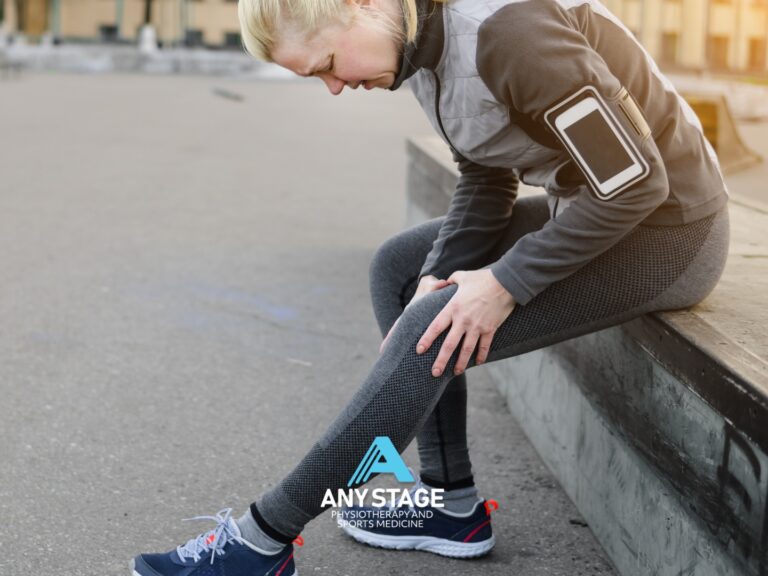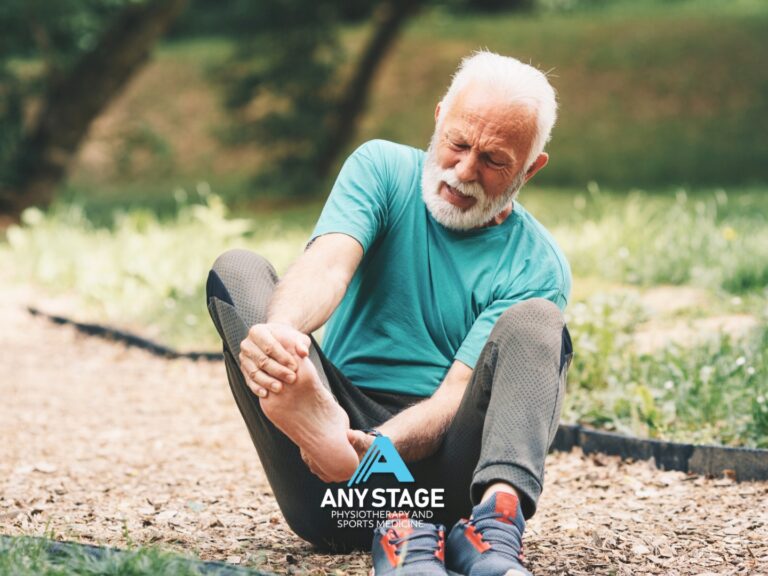What is Knee Pain?
Knee pain refers to discomfort or soreness in the knee joint, which is the joint that connects the thigh bone (femur) to the shin bone (tibia). Knee pain can occur due to a variety of reasons, such as injuries, overuse, or underlying medical conditions.
Common causes of knee pain
- Acute injuries: Acute knee injuries are common in athletes and people who are physically active. Some of the common acute knee injuries include ligament tears, meniscus tears, and fractures.
- Overuse: Overuse of the knee joint can cause pain and discomfort, especially in individuals who engage in repetitive activities such as running or cycling.
- Arthritis: Arthritis is a condition that causes inflammation in the joint, which can result in pain and stiffness. Osteoarthritis is the most common form of arthritis that affects the knee joint.
- Tendinopathy: Tendinopathy is the inflammation or pain in response to increase activity, of a tendon, which can cause pain and discomfort in the knee joint.
- Bursitis: Bursitis is the inflammation of a bursa, which is a fluid-filled sac that cushions and lubricates the knee joint. Inflammation of the bursa can cause pain and swelling.
Common challenges of having knee pain
Knee pain can have a significant impact on an individual’s life. Depending on the severity of the pain, it can limit mobility and make it difficult to perform daily activities. Here are some of the ways knee pain can affect life:
- Limitations on physical activity – Knee pain can make it challenging to participate in physical activity, such as running, walking, or even climbing stairs. This can limit an individual’s ability to participate in recreational activities, perform work duties, or even complete basic household tasks.
- Reduced quality of life – Chronic knee pain can impact an individual’s overall quality of life by limiting their ability to enjoy hobbies, participate in social activities, or travel. This can lead to feelings of frustration, isolation, and even depression.
- Increased risk of falls – Individuals with knee pain may experience instability and balance problems, which can increase the risk of falls and injuries.
- Sleep disturbances – Knee pain can make it difficult to get comfortable in bed, which can lead to sleep disturbances and fatigue, increasing risk of further injury.
- Emotional impact – Chronic knee pain is more than just a physical experience, it can have a significant emotional impact, leading to feelings of anxiety, depression, and decreased self-esteem.
It is important to seek physiotherapy advice if knee pain persists or worsens, as early diagnosis and treatment can help to minimise the impact of knee pain on an individual’s life.
Exercise as a Catalyst for Knee Pain Relief
Exercise has been shown to be very effective in improving knee pain by strengthening the muscles around the knee joint. By participating in regular and appropriate exercises, the knee can show improvements in:
- Strength in muscles that support the knee
Exercises that target the muscles around the knee joint, such as the quadriceps, hamstrings, and gluteal complex, can help to improve knee stability and reduce stress on the joint. Strengthening these muscles can also improve walking/running technique and balance, which can help to reduce the risk of falls and injuries. - Increased flexibility
Stretching exercises can help to improve mobility and range of motion in the knee, which can reduce stiffness and pain. Improved flexibility can also help to reduce the risk of future injuries. - Improved circulation
Exercise can help to improve circulation, which can reduce inflammation and promote healing in the knee joint. Improved circulation can also help to reduce pain and stiffness. - Promoting weight loss
Excess weight can put added stress on the knee joint, which can exacerbate knee pain. For every kilogram of excess weight, it estimated that there is four kilograms of extra load on the knee joints.1 Exercise can help to promote weight loss, which can reduce the load on the knee joint and improve overall joint health. - Boost in mood
Exercise can release endorphins, which are natural painkillers and mood boosters. Engaging in regular exercise can help to reduce stress and anxiety, which can exacerbate knee pain.
Our team at Any Stage Physiotherapy and Sports Medicine will be able to provide guidance on exercises that are safe and effective for your specific condition, fitness level, preferences and goals.
Key Exercises for Knee Pain Reduction and Strength
Examples of foundational exercises that can initiate pain reduction, strengthening and improved functioning of the knee include:
Straight leg raises
This exercise helps to strengthen the quadriceps muscles, which support the knee joint. To perform this exercise, lie on your back with one leg straight and the other bent. Slowly lift the straight leg to a 45-degree angle and hold for a few seconds before lowering it back down. Repeat 10 to 15 times on each leg.
Wall sits


Hamstring bridges
Lie down on your back and have the knees bent so that you keep your heels planted on the floor and raise the toes up. Lift your hips/pelvis off the ground while maintaining a neutral spine by keep the core braced. Aim for 3-sets of 8 and progress as tolerated.
Calf raises


This exercise helps to strengthen the calf muscles, which can help to support the knee joint. Stand with your feet shoulder-width apart and raise up onto your toes. Hold for 3-seconds before lowering back down. Repeat 10 to 15 times.
Step-ups


Training the gluteal complex is also very important for knee health. The gluteal muscles play an important role in the overall stability and alignment of the pelvis, hips, and knees. When the glutes are relatively weak in relation to your level of activity, other muscles in the lower limb, such as the quadriceps and hamstrings, may compensate for the lack of gluteal strength. This can lead to altered biomechanics and increased stress on the knee joint, which can contribute to knee pain. The glutes help determine the position of the knee, therefore if the glutes are weak the knee may trend inwards putting them in suboptimal biomechanical position and more force on structures than they can handle.
Final thoughts about knee pain
While knee pain is very common and can have a detrimental effect on an individual’s life, there are certainly physiotherapy strategies that can be implemented, and treatment plans designed specifically to an individual’s situation that will be beneficial in improving pain and returning you back to the things you enjoy.
If you have experienced a recent knee injury, or, you have persistent knee pain, please do not hesitate to contact our friendly and experienced team at Any Stage Physiotherapy and Sports Medicine. We are here to guide you back to a pain free lifestyle and help return you to physical goals.
—


References:
- Messier SP, Gutekunst DJ, Davis C, DeVita P. Weight loss reduces knee-joint loads in overweight and obese older adults with knee osteoarthritis. Arthritis Rheum. 2005 Jul;52(7):2026-32.
Authors


Daniel Lee
DPT, B. Sc, APAM
Director / Principal Physiotherapist
Daniel Lee has created a specialised approach to Physiotherapy treatment, return to sport and injury prevention by incorporating a functional strength & conditioning approach, no matter the individual’s age, sport, lifestyle, or competition level.

Shannon Murray
DPT, B. HSc, APAM
Physiotherapist
Shannon completed her Doctor of Physiotherapy degree at Macquarie University, after relocating from Queensland, where she completed her Bachelor of Health Science degree. Whilst completing her Doctor of Physiotherapy degree, she gained valuable experience in various setting, including private practice and hospital.









